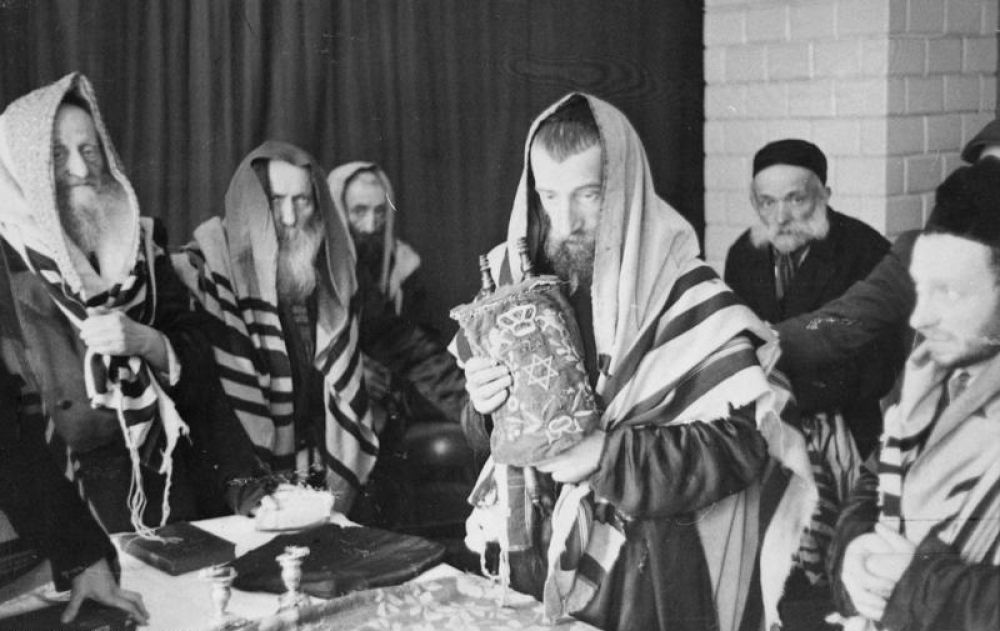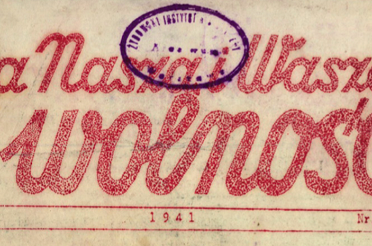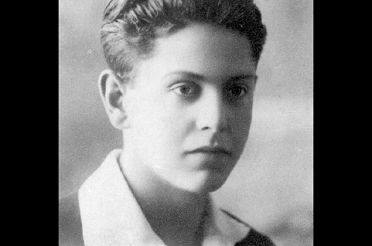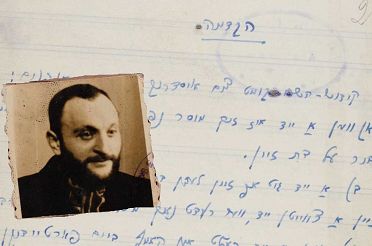It is difficult to say what is going on here, at least the director and the author came up with a wild idea and the whole story is commented on in various ways. On the one hand, people do not understand how they, at such a serious moment, when a river of blood is flowing in Kerch and Kharkiv [where heavy fighting took place on the Eastern Front in May 1942], can have their heads on shooting Jewish horror films. On the other hand, people make the assumption that this movie will not do us any good.
Why be surprised? In the display windows [there are] […] cakes, delicious pastries and other delicious food. The premises and gardens are flaunting […], and our women wear striking make–up, elegant clothes and move in a provocative way. Naturally, the occupant cannot bear this. This gives him the basis for further […] humiliation. There are various versions of this filmmaking. The fantasy works a bit too [hard], creating a nightmarish image together. People talk about making a movie in the Commune. Jews with beards were caught on the street, seated in the meeting room at Grzybowska Street under the leadership of Czerniaków, and a meeting of the Judenrat was organized. Jews had to behave like madmen, Czerniaków too, he had to make a laughingstock of himself, and the cameras shot everything…
They caught Jews with beards and elegant young women in the streets. They took them to the public bathhouse at Dzielna Street, ordered them to strip naked, arranged them in pairs in various drastic positions and ordered them to dance. One Jew who did not want to dance died a martyr’s death [al Kiddush Hashem]. So they say.
They came at Gęsia Street to film the house of prayer. One of the praying, an elderly man, approached the head of the “artists” and asked him what his name was… He replied, “Why do you need to know?” “I would like to pray for your health,” was the answer that had been prepared in advance. The boss got confused and they all went away… So they say.



![niemcy_film_propagandowy_klub_bundesarchiv_2.jpg [82.60 KB]](https://www.jhi.pl/storage/image/core_files/2022/3/14/022b75af8f739ba7f066fe1066c59c23/jpg/jhi/preview/niemcy_film_propagandowy_klub_bundesarchiv_2.jpg)
![Lewin_small.jpg [624.02 KB]](https://www.jhi.pl/storage/image/core_files/2022/3/14/85ee1327a769ebc2b834fb313b135945/jpg/jhi/preview/Lewin_small.jpg)
![adam_czerniaków_album_1.jpg [593.83 KB]](https://www.jhi.pl/storage/image/core_files/2022/3/14/9aecb4008db1f4b63676112bc2a9a3d5/jpg/jhi/preview/adam_czerniaków_album_1.jpg)
![Pawiak_in_Warsaw_(-1906).jpg [106.23 KB]](https://www.jhi.pl/storage/image/core_files/2022/3/14/a7e198da0f8a924c47d3bc6a320d0943/jpg/jhi/preview/Pawiak_in_Warsaw_(-1906).jpg)
![11.06.1942_jechiel_gorny.jpg [207.35 KB]](https://www.jhi.pl/storage/image/core_files/2022/3/14/3ef3bc5c02ad20db799ca3b6dd72dd5d/jpg/jhi/preview/11.06.1942_jechiel_gorny.jpg)



![MKiDN_bialy_logotyp_strona_ŻIH_EN.png [10.32 KB]](https://www.jhi.pl/storage/image/core_files/2023/1/12/0fbb15388d1a5d89c65891b6ce66941c/png/jhi/preview/ZNAK%20ENG.png)